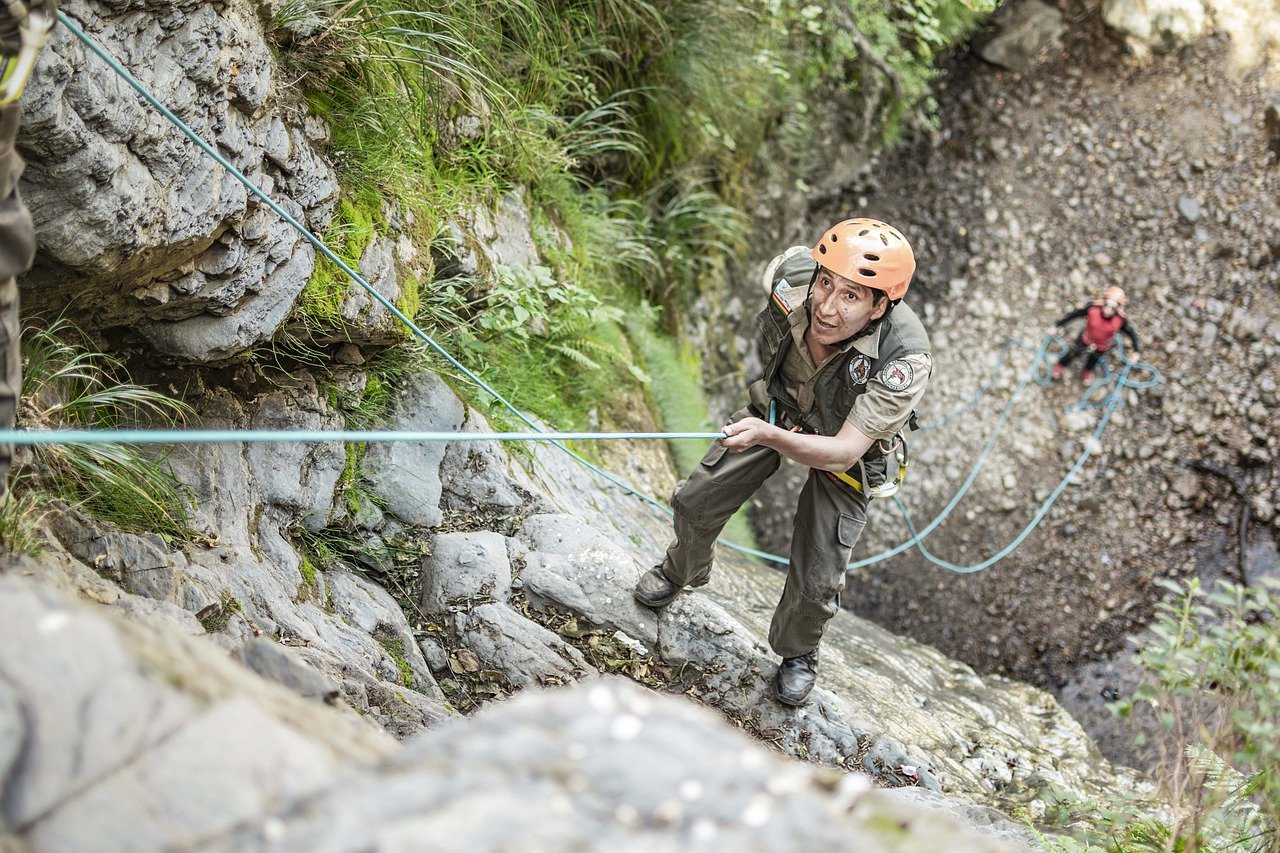Do you want to know how to retrieve your rope after rappelling? Rappelling is an excellent way for adventurers and explorers alike to get down from high places. Being able to retrieve the rope and continue on your way is most important for canyoneering as you will continue to hike onward after rappelling down.
Retrieving the rope after rappelling is dependent on the type of anchor created to support the rappel. As long as the anchors are chains that are permanently bolted into the rock face, the rope can be rigged to be pulled through the anchors for retrieval simply by pulling on one end of the rope. If the anchor is something like a tree, then the anchor will need to be rigged separately, otherwise, the rope is retrievable but the anchor is not.
To ensure your safety, it is ideal to work with a professional instructor to learn the techniques and safety measures needed for rappelling. However, there are a few things that you can learn to get you started in the right direction. For example, do you know how long your rope needs to be to make a safe rappel?
Anchor Types on Chains for Easy Rope Ratrieval
Based on the length of the rope, the type of anchor set-up will differ. For example, if the rope is double the length of the rappel and the anchor is two chains with the rope threaded through the bottom link, then retrieving the rope simply includes pulling one strand of the rope through until the other rope falls to the bottom of the rappel.
Alternatively, if the rope isn’t long enough to do a double rappel but it is still longer than the rappel and thus safe to use, then the anchor will likely include will need to have a carabiner blocking one end of the rope from running through the anchor points with a paracord attached to the other end. After a single strand rappel is complete, the end of the paracord can be pulled on until the rope falls to the bottom of the rappel.
► Step By Step for Creating Anchors for Canyoneering and Rappelling
Anchor Types on Natural Features (Trees and Rocks) for Easy Rope Retrieval
If you are rigging your anchor around a tree or a rock, then you may want to create a 2-Ring Retrievable anchor that will enable you to get the anchor and the rope while at the bottom of the rappel. To rig this type of anchor, you will need a sling, carabiners, and a retrieval cord.
When wrapping the sling around the tree, ensure that you have the retrieval cord attached to one end of the sling so that you can pull it down after your descent.
Rope Length for Safe Rappeling
At a minimum, your rope should be a few feet longer than the length of the rappel. Ideally, your rope is double the length of the rappel. This way you can do a more controlled descent on double strands compared to single-strand rappelling.
A rope that is significantly more than double the distance of the rappel is safe as long as the rappeller is landing on dry land. If the excess rope goes into a river or mass of water, it is possible that the rappeller gets wrapped in the excess rope when they reach the bottom and they can drown.
Typically, cannoneers will bring a “short rope” and a “long rope” to accommodate the different rappel lengths. Additionally, they may bring one large rope to support the rappel along with a thinner rope, such as paracord, that is used to help rig the anchor and ropes for retrieval if the rappel is too long for a double-strand rappel.
Other Rappelling Safety Tips
Do not rappel more than 100 feet (30 meters) off the ground without a professional guide. It is difficult to retrieve your rope if you do, and you can hurt yourself or worse if something unexpected happens.
If you are rappelling with a group of people, make sure everyone is on the same page about retrieving their ropes after they reach the bottom! It’s easy to get distracted by the excitement and forget what needs to be done next.
Rappelling is exciting and an excellent way for adventurers and explorers alike to experience some adrenaline! Follow these tips on how to retrieve your rope after rappelling so you can have an easy time getting back up once you reach the bottom of your descent.
More Like This:
- How To Retrieve Your Rope After Rappeling
- 5 Ways To Practice Rappelling
- Can You Rappel On A Dynamic Rope? Static Vs. Dynamic Rope For Rappelling
- The Best Rappelling Device For Canyoneering
- Comparing Different Types Of Rappeling
- The Best Rope For Rappelling
- Harnesses For Rappeling
- Beginners Guide To Rappeling
- How To Self Rappel With A Grigri
- What Is The Safest Way To Rappel?

